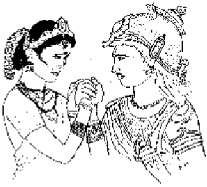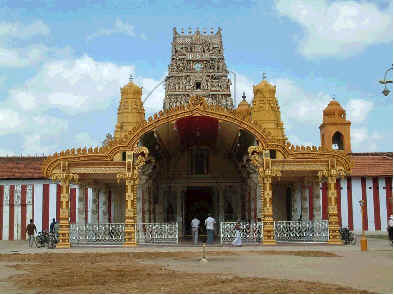Chapter 1
Ceylon’s Independence
The dawn of independence
On of February 04, 1948, the year following the independence of India, Ceylon (or Sri Lanka as it was renamed in 1972), was granted independence. Ceylon had been a British colony under a Governor representing the British Crown. The country enjoyed a peaceful transfer of power by the British to the Ceylonese. In India, on the contrary, there was immense bloodshed before independence, and much worse followed after independence and the partition of India.
Under the Soulbury Constitution, based on the British system of government, power in Ceylon was vested in a democratically elected Parliament with a Lower House (House of Representatives) and Upper House (Senate). The Lower House was elected by universal franchise and majority rule prevailed. Consequently, the Sinhalese dominated the government.
At the time of Independence there was presumably a population of about 8 million on the island, of which roughly the Sinhalese constituted 66%, Tamils 26%, Muslims 7% and the balance all other communities of which Burghers descended from the Portuguese and Dutch were prominent. The Tamils were of two categories; the indigenous Northeast Tamils who inhabited Ceylon from times immemorial and the Upcountry Tamils. The latter were brought by the British into the country from Tamil Nadu from the mid-nineteenth century to work on tea, rubber and coffee estates in Central Ceylon. Each of the two categories of Tamils numbered over one million.
The main religions were the Buddhism of the Sinhalese, Hinduism of the Tamils, Islam of the Muslims and Christianity. About 8 % of the people were Christians. They were the converted Sinhalese and Tamils, along with Portuguese and Dutch Burghers. Christians were divided into Catholics and Protestants. The Portuguese were Catholics, while the Dutch and British were Protestants. Hence they converted the people to their respective religions.
After independence, as the Sinhalese were in a clear majority, in effect, power passed to them. The Tamils and Muslims accepted the situation because of assurances of equal treatment and there was peaceful transfer of power. The Tamils were happy to be part of Ceylon. The NorthEast Tamils were economically dependent on the South for employment and trade, and had no desire to separate. There was a distinct Ceylonese identity as a result of the Britishers unifying the administration of the island. Ceylon was an island paradise when it became independent.
Paradise gained and lost
In 1948, Ceylon was prosperous with a favourable economy. The main source of income was from tea, rubber and coconut. Paddy, our staple food was widely cultivated. People were content, whether rich or poor. The different communities lived in remarkable amity. Having lived much of my young days in the Sinhala South, it is a pleasure to recall the pleasant atmosphere that prevailed in pre-independent Ceylon. The uncorrupted Sinhala villagers, their openness and friendliness, the rustic charm of the damsels and the serene village settings, brings back happy memories of my youth.
As the son of a railwayman, and later as an undergraduate and an officer in a para-statal organization, I had the opportunity to see the length and breadth of Ceylon. Sinhalese, Tamil, Muslim and Burgher students studied together in North, South, East and West. Many Sinhalese, Muslim and Burgher students came to study in Jaffna. I can remember the Sinhalese bakeries in Jaffna town, and Muslim and Chinese hawkers going round villages in Jaffna selling their wares. Except for petty personal quarrels, there was perfect racial amity. Little did we realise that the country would go through racial turmoil and a blood bath after independence.
Jaffna, the heartland of the Tamils, is a comparatively arid zone bereft of rivers and natural resources. Their only asset was their intelligence and hard work. The Jaffna Tamils had the benefit of English missionary schools and dedicated teachers. They advanced in English education, and Tamil parents encouraged their children to pursue studies. Consequently they held good positions in the government and the private sector. They also fanned out into the Sinhala villages in the South and established shops all over. By sheer hard work and enterprise, the Jaffna Tamils had secured for themselves a coveted position in the country.
Under the British, those sections of the population that had opportunities and were prepared to work hard progressed without discrimination. To the foreign rulers, all were the same and their only criteria was efficiency. While they did consider themselves the rulers, they showed no distinction among the ruled. None of the communities were hostile to the British. Any impressions created later by self-seeking Sinhalese politicians that the British favoured the Tamils, is totally unfounded and malicious. If the allegation was true they would not have transferred unfettered power to the Sinhalese when granting independence, without any safeguards for the minorities.
Ceylon was economically stable at the time of independence. All communities were enjoying the benefits of peace and prosperity. Employment was easy. Jobs were seeking the youth even before the results of examinations. Both after my degree and accountancy finals, jobs were for the asking before the results were out. Men at the top who were recruiting candidates for employment had no racial bias.
I recall with gratitude, how I was recruited after completing my Articles, for my first job as an accountant out of 25 candidates, by two Sinhalese directors, who did not know me previously. Things changed gradually after independence and racial venom began poisoning the country. The older generation of top-rung Ceylonese were getting replaced by those who were blurred by racism. After the Sinhala Only Act, finding places of employment for Tamils became a nightmare. Children were separated into Sinhalese and Tamil streams and standardisation discriminated against the Tamil students. Sinhalese started to openly abuse the Tamils. The Tamils became second class citizens in the land of their birth. Legal discrimination and mob violence by the Sinhalese made life impossible for the Tamils. Ultimately it was a case of Paradise lost, probably forever.
Ceylon Tamils, the original inhabitants
The earliest information about Ceylon (or Lanka as known earlier) are from the Indian epics, Ramayanam and Mahabharatam. These epics refer to the great Dravidian King Ravanan, a devout Hindu who ruled Lanka, more than five thousand years ago. The Buddhist chronicles, the Mahavamsa written in the 6th Century A.D., and the later Suluvamsa, give information about Ceylon history from the 6th century B.C. All these contain some impossible stories, but contain some useful information about the early inhabitants of Ceylon and their culture and civilisation.

Tamil Hindu King Ravanan, Lord of Lanka
Common sense dictates that migrants from southern India were the original inhabitants of Sri Lanka. There are at present, three ethnic groups in Sri Lanka – Sinhalese , Tamils, and Muslims. Of these, Islam was founded in Arabia in the 7th Century A.D., and the arrival of Muslims in Sri Lanka commenced later, in the 8th century A.D. According to the Mahavamsa, the Sinhala chronicle, the Sinhalese race originated in Lanka after the arrival by sea of Prince Vijaya and 600 male companions from North East India in the 6th Century B.C. As they misbehaved, they were banished from the kingdom by Vijaya’s father, who was the king, and drifted to Ceylon. There were no women among them, and so they married the local Tamil women including the Yaksha queen Kuveni, to form the Sinhala race.
From the ancient Indian epics, and other sources, there is information that Tamils were in Sri Lanka, then called Lanka, from pre-historic times. Some of them were known as Yakkas and Nagas, a cultured and civilised people. Many thousands of years ago, obviously Ceylon was geographically part of the Indian mainland and the sea separated it by gradual erosion.

Queen Mandothari sends her son, Prince Indrajithan to battle
This is not to say that Tamils did not come from South India and settle down or go there subsequently. There would no doubt have been constant interaction between India and Ceylon and a flow of people between the two countries from time immemorial, before and after the arrival of Vijaya. India and Ceylon are only a few miles apart, and fishermen from either side would have seen the other lands and people and settled on either side and intermarried.
Not much information is available about the ancient Tamils of Lanka, who lived before the period of the Tamil Hindu King Ravanan, five thousand years ago, though Tamil existence in Lanka goes far back beyond King Ravanan.
King Ravanan, the first known Tamil king was a powerful ruler, and was also known as Lankeswaran or Lord of Lanka. His son, Crown Prince Indrajithan, was a renowned warrior, and his wife was the virtuous Mandothari. Later on there were famous Tamil Kings like Ellalan the Just and Parakramabahu the Great under whom the country prospered. The mighty Tamil Chola kings of South India ruled over the whole of Ceylon during different periods. By a twist of fate, the Tamils who were occupying all of Ceylon were overwhelmed and assimilated by the more aggressive Sinhalese. Gradually the Tamils were pushed into the Northeast, which now remains their embattled homeland. They are now fighting for their survival.
Immigrants to Ceylon
It can be assumed that Vijaya and his men who arrived from India in the 6th century B.C., and originated the Sinhala race were Hindus. However, Mahinda and Sanghamitta, the son and daughter of King Asoka of India brought Buddhism later, and profoundly influenced the country. The Sinhalese were converted to Buddhism during the reign of King Devanampiyatissa. Many South Indians who immigrated to Ceylon up to recent times were assimilated by the Sinhalese.
During the mid-nineteenth century, Tamils from South India were brought by the British to work on their estates in the hill country as they were hard working. They constituted a substantial community at the time of independence and were contributing greatly to the economy of the country. They were concentrated mostly in the Central, Uva and Sabaragamuwa provinces and lived under difficult conditions. They are wrongly referred to as Indian Tamils, as the Sinhalese, for instance, who also came from India are not called Indian Sinhalese. These Tamils who immigrated in the nineteenth century should be correctly called Upcountry Tamils.
The other large community, the Muslims, were originally Arab traders who came to Ceylon and intermarried with local women. They were mainly traders and are spread all over the island. Among the Muslims were some Javanese brought by the Britishers as soldiers. All of the Muslims speak the Tamil language at home and those living in Sinhala areas could speak both Tamil and Sinhala well. Presumably, many Muslims also immigrated to Ceylon from South India.
The burghers were Eurasians of Portuguese and Dutch origin. They were westernised, well educated and living mostly in the towns. They did well in the professions and many of them served in the police force during British times. One of them, Duncan White, became a national hero when he won the silver medal for hurdles at the Olympics. After independence, most of the burghers in Ceylon, preferred to emigrate to Australia and other Western countries.
